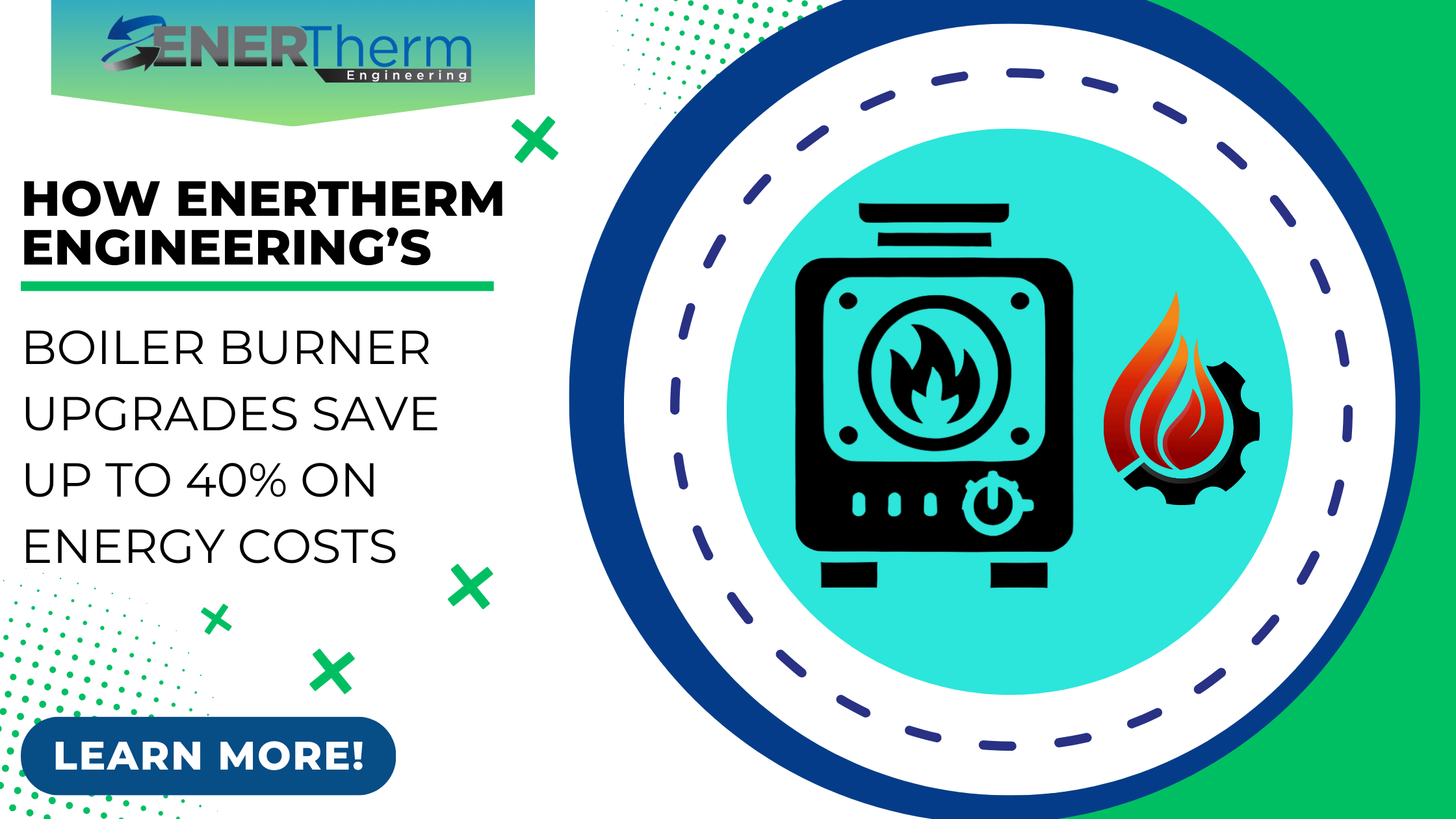In today’s industrial landscape, energy efficiency isn’t just a buzzword—it’s a crucial element for operational excellence and sustainability. At EnerTherm Engineering, we specialize in enhancing energy performance through innovative solutions, ensuring that factories achieve significant energy savings and reduce operational costs. In this blog post, we explore our proven methodologies for upgrading boiler burners and related systems, demonstrating how these upgrades can save up to 40% of energy in your factory.
Sub-Metering for Enhanced Monitoring
Effective energy management begins with accurate measurement. Our i-Log data logging and reporting system offers comprehensive sub-metering for gas and electricity. This system provides real-time and periodic summaries via an intuitive dashboard, empowering you to make informed decisions regarding capital and operational expenditures. This visibility is crucial for identifying inefficiencies and optimizing energy use across your factory.
Combustion Management and O2 Trimming
Controlling the air-to-gas ratio is pivotal for maintaining optimal combustion efficiency. Our advanced combustion management system automatically adjusts the air requirements, preventing the adverse effects of under or over-aired conditions, such as increased emissions and higher running costs. This adjustment alone can boost efficiency by 3-6%.
Pre-Heating Combustion Air
Cold combustion air significantly hampers process efficiency. By integrating a heat exchanger into the waste gas stream, we can pre-heat the combustion air, thereby enhancing efficiency by 3-10%, depending on the temperature of the pre-heated air. This simple yet effective upgrade maximizes heat recovery and minimizes energy waste.
Insulation and Refractory Replacement
Over time, insulation degrades due to factors like water ingress, leading to increased heat losses and energy consumption. A heat survey can identify areas requiring repair or improvement. By replacing or upgrading insulation, factories can achieve efficiency gains of 3-6%, contributing to lower energy bills and reduced emissions.
Steam Boiler Enhancements
Steam boilers are integral to many industrial processes. We offer cost-effective tube inserts that enhance heat transfer efficiency, resulting in 4-7% gains. Additionally, applying thermal coating to the combustion walls reduces heat loss, further improving efficiency by 2-5%.
Voltage Optimization
Reducing the incoming voltage supply to an optimal level can significantly decrease electricity usage and extend the lifespan of your equipment. This approach not only enhances energy efficiency by 5-8% but also ensures smoother and more reliable operations.
Quantifying Efficiency Gains
Let’s break down how to calculate the efficiency gains from upgrading your boiler burner system in a simple, step-by-step way.
Step-by-Step Calculation
Step 1: Understand the Basics
- Energy Used for Heating: This is the amount of energy (in kilowatts, kW) required to heat your product (like oil) to the desired temperature.
- Total Energy Input: This is the total amount of energy (in kW) your system uses, as measured by the gas or electricity meter.
Step 2: Calculate Your Current Efficiency
- Energy Used for Heating: Suppose your system needs 5000 kW to heat the oil.
- Total Energy Input: Suppose the energy input from your gas meter is 7200 kW.
To find the current efficiency, use this formula:
Efficiency = (Energy Used for Heating / Total Energy Input) × 100
Plugging in the numbers:
Efficiency = (5000 / 7200) × 100 ≈ 69.4%
Step 3: Determine the Cost Savings from Efficiency Improvement
Let’s see how much money you can save with a 1% efficiency improvement.
- Annual Energy Cost: Suppose you spend £850,000 per year on gas.
- Current Efficiency: 69.4% (from Step 2).
The formula to calculate the value of a 1% efficiency improvement is:
Value of 1% Efficiency Improvement = Annual Energy Cost Current Efficiency
Plugging in the numbers:
Value of 1% Efficiency Improvement = 850,000 / 69.4 ≈ £12,247
Step 4: Calculate Total Savings from the Expected Efficiency Improvement
Suppose you aim to improve your efficiency by 6%. To find the total savings:
Total Savings = Value of 1% Efficiency Improvement x Efficiency Improvement Percentage
Using the numbers from the previous steps:
Total Savings = 12,247 × 6 ≈ £73,482
So, if your efficiency improves by 6%, you could save about £73,482 annually.
Industry Insights and Best Practices
Recent industry reports highlight the growing importance of energy efficiency in manufacturing. According to the International Energy Agency (IEA), improving energy efficiency could lead to a reduction of global energy demand by 12% by 2040, significantly cutting greenhouse gas emissions and operational costs. Furthermore, the adoption of smart manufacturing technologies can enhance energy efficiency by providing real-time data and analytics to optimize production processes.
Conclusion
EnerTherm Engineering‘s comprehensive approach to boiler burner upgrades delivers measurable energy savings and operational improvements. By focusing on sub-metering, combustion management, pre-heating, insulation, and voltage optimization, we help factories achieve substantial efficiency gains. Contact us today to learn how we can transform your energy performance and drive your factory towards a more sustainable and cost-effective future.

